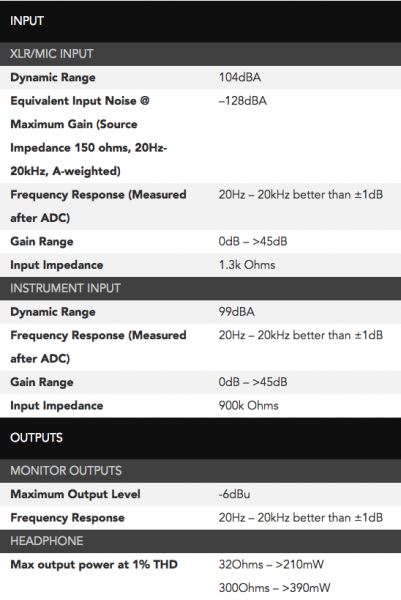
The RØDE NT1 & AI-1 Complete Studio Kit is a multi-versatile solution for capturing quality audio just about anywhere. The kit comes with everything you need – a RØDE NT1 1″ diaphragm condenser microphone, AI-1 audio interface, shock mount, pop-shield, XLR cable, a copy of Ableton Live Lite, and a USB-C/A cable to transfer data from your AI-1 to your computer.
In a lot of cases, if you are a cameraman or camerawoman, audio is one of those things you probably don’t always give enough attention to. For many years I worked as a solo camera operator travelling the world covering major news events, and this job always required me to record voice over audio tracks from correspondents. Often the quality of the audio was a compromise based on the tools available and the location you were in. Recording voice-overs usually meant hooking up a microphone to a camera and then having to ingest that material into an NLE. In a breaking news environment, these are extra steps you don’t want to have to take, especially if you are up against deadlines.
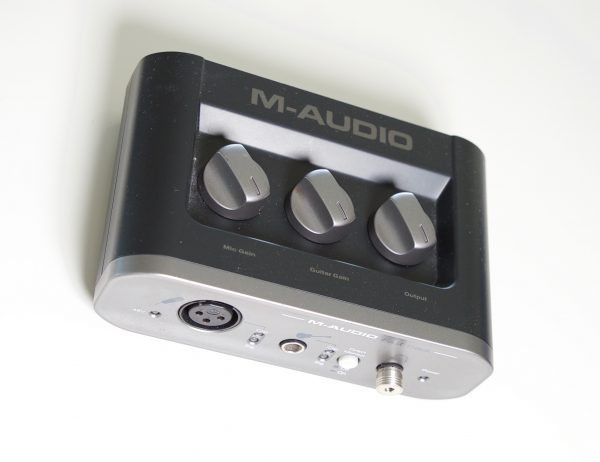
To try and speed up my workflow, I eventually bought the Fastrack USB audio interface made by M-Audio and used that for many years. The beauty of a USB interface is you can simply plug it into your computer and then record audio directly within your NLE or other audio recording software. While the M-Audio served me well, it was large and bulky, the pre-amps weren’t particularly good and you had to have the recording input set at the maximum to get a decent level out of it.
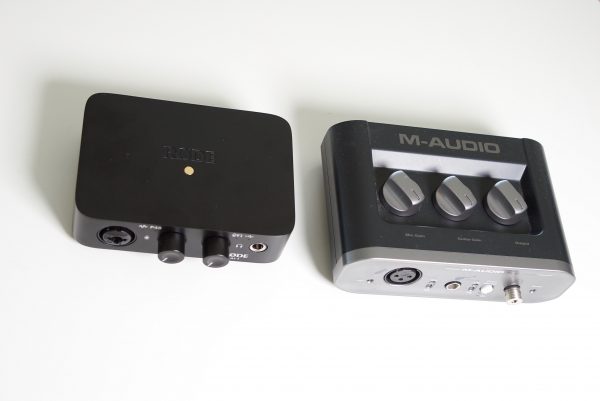
I have been wanting to replace it for quite some time, but never quite got around to doing it. Then RØDE announced the AI-1 audio interface and I thought it was a good idea to finally get rid of the old M-AUDIO Fastrack.
AI-1
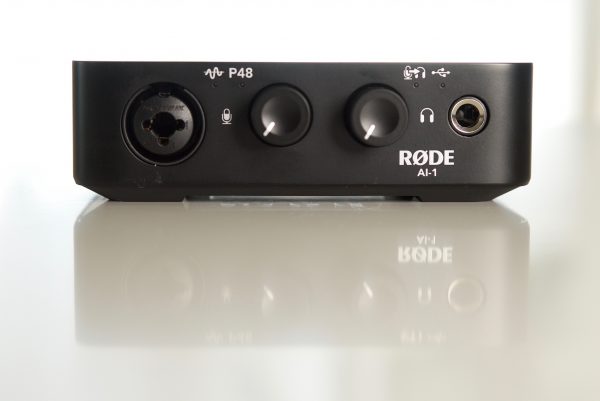
Currently, RØDE is only selling the AI-1 as part of the Complete Studio Kit $349 USD, but soon you will be able to purchase it separately for $129 USD. While the Complete Studio Kit certainly offers good value for money considering how much you get for the asking price, I personally think the AI-1 alone is a product that will find its way into a lot of news shooters kits, so let’s look at that first.
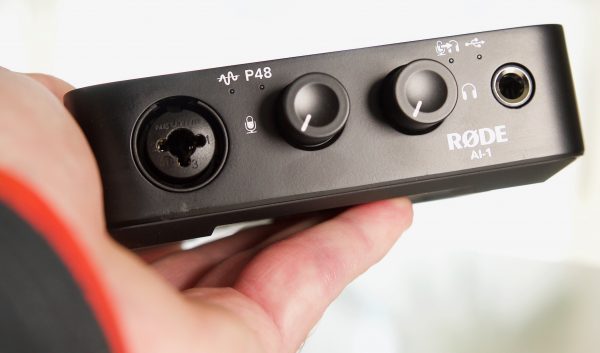
The AI-1 is nice and compact but I was actually surprised at just how heavy it was. When I first picked it up I was expecting the AI-1 to be quite lightweight, but the chassis is made out of solid metal and it feels very robust. The AI-1 weighs in at 560g (1lb 3.7oz) and has dimensions of 124mm w x 38mm H x 100mm D.
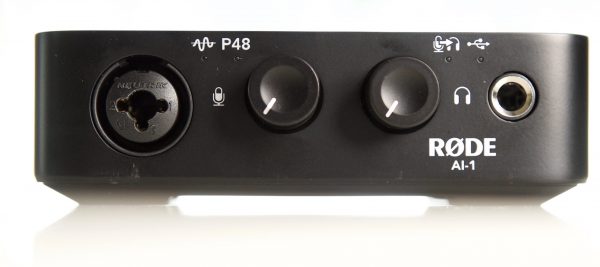
The unit has a fairly simple interface, but it’s functional and easy enough to use. On the front, there is a Neutrik XLR-1/4” combo input, a mic level input dial, a headphone volume output dial, a 1/4” headphone jack, and LED lights that indicate USB bus power, +48V Phantom power, and input level.
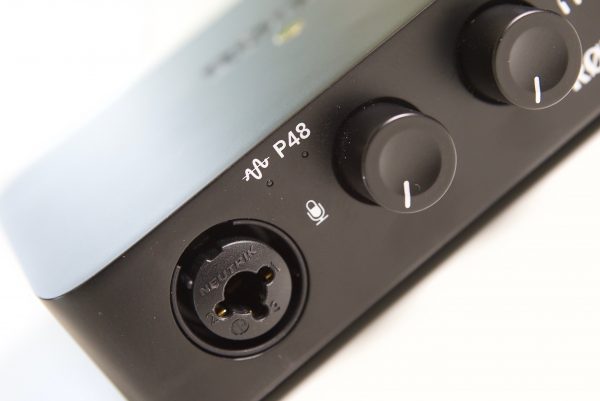
The dials are solidly made, but I would have preferred to have seen a notch of the input so you could turn the unit on or off. Once you have it plugged into a USB port on a computer the AI-1 is always on. Now, this isn’t a problem if you are using a computer hooked up to mains power, but if you are using it with a laptop running off batteries, it’s going to be drawing power all the time. This may not be a big deal, but I prefer not to have accessories drawing power when I’m not using them.
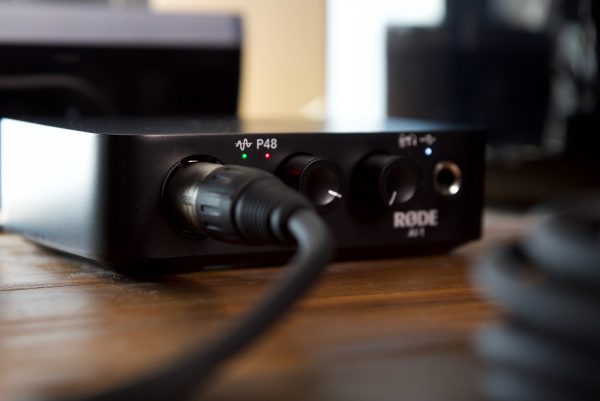
The AI-1 doesn’t have any VU or level meters on it, except for a small LED that changes colour between green and red. Green indicated that the input level is good, but if it turns red the input level is too high and is clipping. While having a single blinking LED light is not ideal, it’s easy enough to adjust your level so you can get your input in a good starting position. RØDE probably decided against putting VU meters on the interface as most users are going to be monitoring and adjusting the input level in their NLE or audio recording software.
Phantom Power
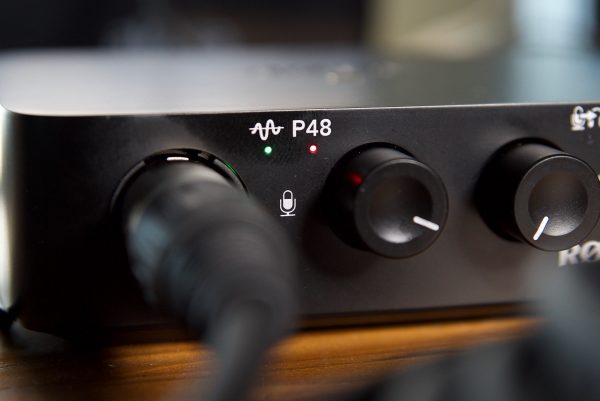
A lot of microphones, especially ones used for recording voices require +48V Phantom power, the AI-1 can provide that by simply pushing the input dial once until the P48 LED indicator turns red. To turn it off you just press it again.
USB Bus Powered
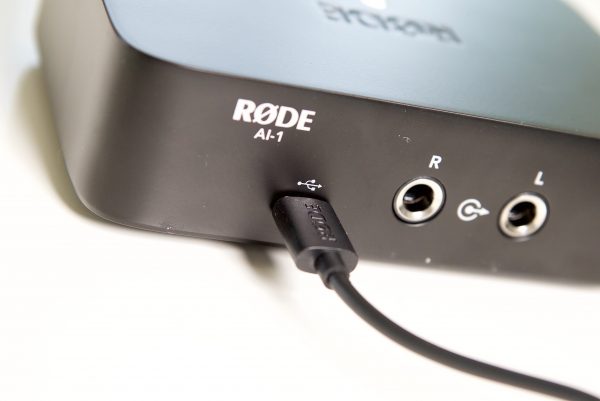
The AI-1 is USB bus powered so there is no need to power it externally. This makes it ideal to use with laptops on location. RØDE could have just made the AI-1 with a standard USB connector, but they chose to go with USB-C. This is a smart move given where USB connectors are heading, and it’s good to see RØDE thinking ahead. RØDE gives you a USB-C to USB cable with the kit as they recognized that a lot of potential users of the AI-1 are probably still using computers with standard USB inputs.
The AI-1 can deliver audio at a sampling rate of up to 96 kHz at 24-bit. The unit itself has an equivalent self-noise of -128dBa.
Plug & Play
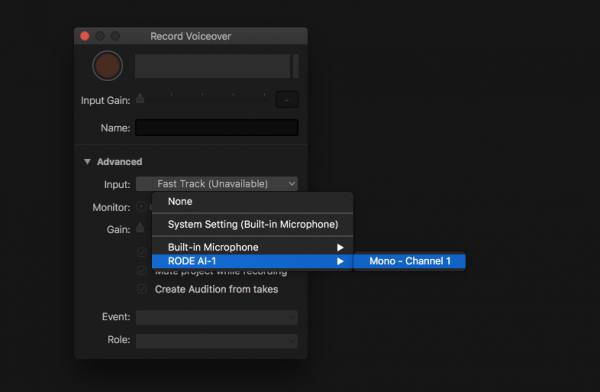
The nice thing about the AI-1 is that it’s a plug and play system meaning you don’t have to install any drivers to use it. You just plug it straight into your computer and you are ready to go. There is no set up required which is great as you can just attach the AI-1 to anyone’s computer and start using it. I hooked it up to my iMac and opened FCPX and it recognised the AI-1 instantly.
Headphone Amplifier
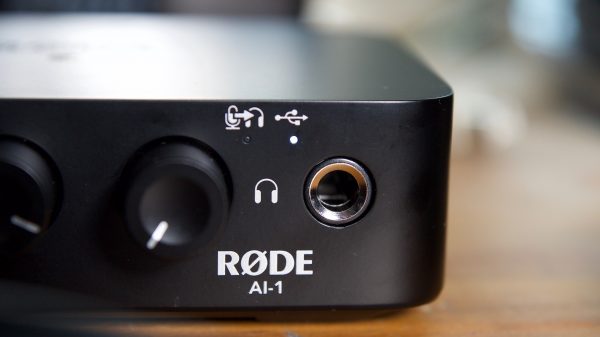
For monitoring your recordings the AI-1 has a built-in headphone amplifier which provides a good amount of output. You can also enable direct monitoring by pressing the headphone output dial once. If you are direct monitoring, you need to be aware that the signal is going directly from your microphone straight into your headphones and not through to your computer. This is useful so you can monitor without any latency. If you are running any plug-ins or effects on your audio, it will also allow you to listen to the raw input. This is different to a blend knob where you can mix in an amount of computer playback and mic input.
If you turn direct monitoring off, the signal you will be hearing goes from the microphone, through the computer and then back to your headphones.
Outputs
The AI-1 has two 1/4” (impedance balanced) outputs so you can use it to output your audio signal to a pair of studio speakers without introducing any signal noise for mixing.
Other alternatives
There are a ton of options available when it comes to USB audio interfaces, and below are just a handful of alternatives available to the RØDE AI-1.
Focusrite Scarlett 2i2 USB Audio Interface – $149.99 USD
Shure X2u – XLR to USB Microphone Signal Adapter – $99 USD
Behringer U-PHORIA UMC22 2×2 USB Audio Interface – $39.99 USD
Universal Audio Arrow 2×4 Thunderbolt 3 Audio Interface with Realtime UAD-2 SOLO Core Processing – $499 USD
M-Audio M-Track 2X2 USB Audio Interface – $99 USD
Tascam US-2×2 2-Channel USB Audio Interface – $149.99 USD
Another thing to remember is that a lot of dedicated audio recorders like those from Zoom or Tascam can act as an audio interface with a USB cable connected to a computer.
Complete Studio Kit
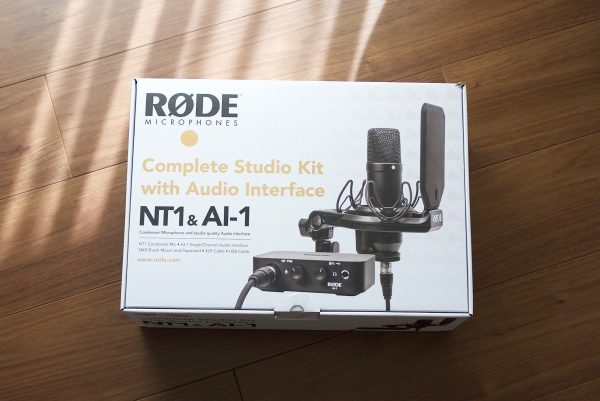
The AI-1 is a great piece of kit, but it becomes even more powerful as part of the Complete Studio Kit. As I mentioned earlier the Complete Studio Kit includes an NT1 1″ diaphragm condenser microphone, the AI-1 audio interface, a shock mount, a pop-shield, an XLR cable, a copy of Ableton Live Lite, and USB-C/A cable to transfer data from your AI-1 to your computer. At $349 USD it’s hard to argue that it doesn’t give you an awful lot of bang for your buck. The NT1 itself retails for $249 USD, so for an extra USD$100, you are getting a lot of extras thrown in.
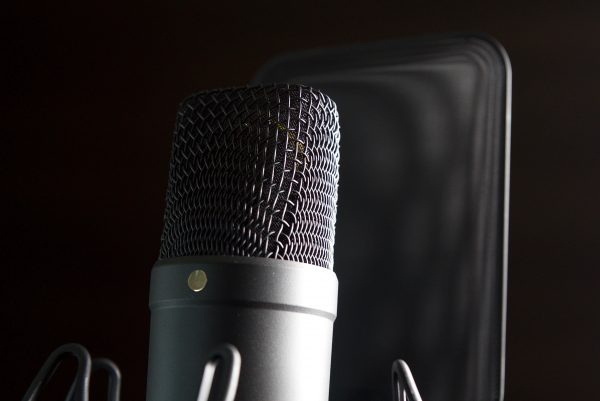
We have already talked about the features of the AI-1, so let’s talk about the NT1. The NT1 is a large-diaphragm cardioid condenser microphone that features a HF6 1″ capsule. According to RØDE, the HF6 is designed to provide a detailed midrange response with smooth highs and warm bass. The capsule itself is suspended internally with a Rycote Lyre shock mount to help reduce vibration and handling noises. The NT1 is claimed to have a low, 4.5 dB of self-noise. The body of the mic is machined from nickel-plated aluminium that is then coated with a ceramic layer that is electrostatically applied for a scratch-resistant finish.
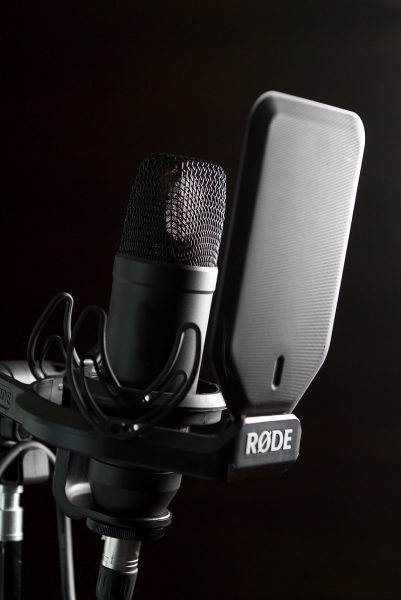
The NT1 sits in the included Rycote Lyre shock mount system which despite being made out of hard plastic feels nice and solid and well made.
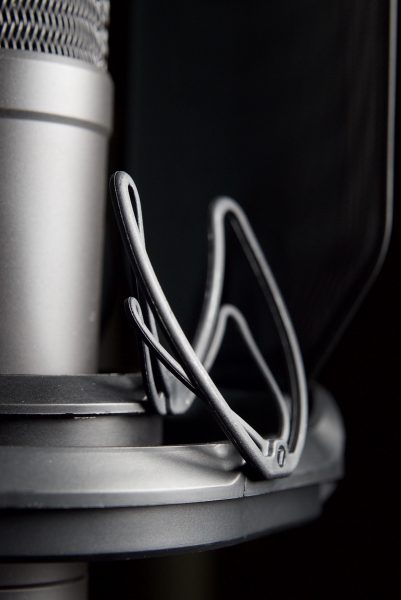
The shock mount isolates the NT1 from any vibrations and in a nice touch, there is a place to tuck your XLR cable in so it doesn’t pull on the microphone or get in the way.
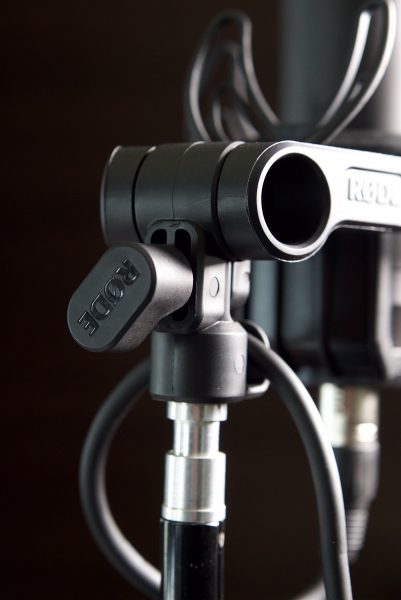
The shock mount also has an adjustment knob so you can alter the angle of the microphone. The shock mount has a standard 5/8″ mount to attach to microphone stands or even a light stand.
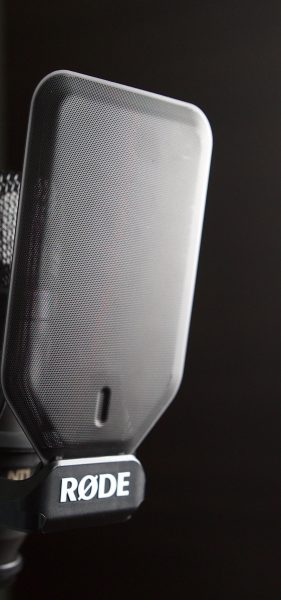
The included pop shield sits in a groove at the front of the shock mount.
XLR cable
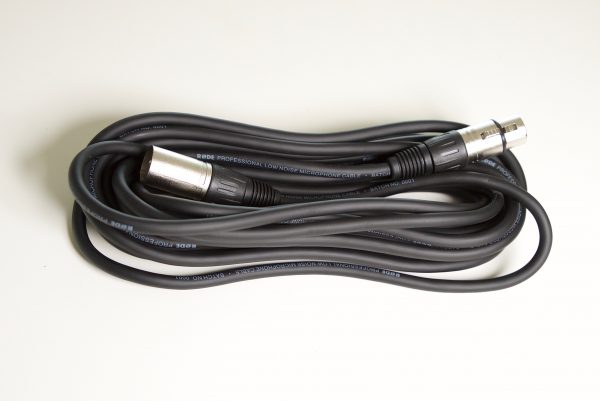
It’s great to see a company include an XLR cable with a product. I wish more manufacturers would do this. The included XLR cable isn’t just a short 30cm version either, it’s nice and long.
Ableton Live Lite
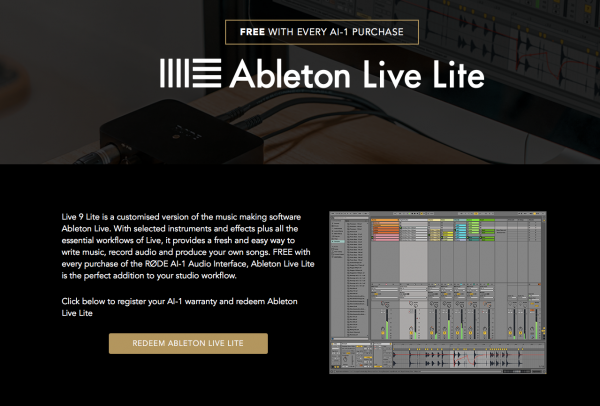
When you purchase the Complete Studio kit from RØDE, they give you Ableton Live Lite. Ableton Live Lite is a customised version of the music making software Ableton Live. With selected instruments and effects plus all the essential workflows of Live, it provides an easy way to write music, record audio and produce your own songs.
Audio quality and quirks
This is always a hard one to judge, especially in the case of a review. I found the AI-1 did a nice job as far as audio quality was concerned, but occasionally when using it with FCP X I did find that even though it detected I was using the AI-1, no audio signal was being routed through. I found to fix the problem I had to pull the USB cable out and put it back in.
You can think of the audio interface and microphone like a camera and lens. There has to be a balance to achieve a quality result.
The NT1 offers good performance for its price, and coupled together with the AI-1 it’s a nice audio solution that can be used for a wide variety of applications. The AI-1 has a really quiet pre-amp and a low noise floor, so it doesn’t sound terrible if you need to use a very gain hungry microphone that requires you to set the input level really high.
| Computer Connectivity | USB |
| Form Factor | Desktop |
| Simultaneous I/O | 1×2 |
| Phantom Power | Yes |
| Bit Depth | 24-bit |
| Sample Rates | 44.1kHz 48 kHz 88.2 kHz 96 kHz |
| Analog Inputs | 1 x Neutrik XLR-1/4” combo |
| Analog Outputs | 2 x 1/4” (impedance balanced) 1 x 1/4” (headphones) |
| Direct Monitor | Yes |
| USB | 1 x USB Type C |
| Bus Powered | Yes |
| OS Requirements | OS RequirementsMac OS 10.10 or later Windows 7 or later |
| Depth | 100mm Total (with knobs) Chassis: 88mm |
| Width | 124mm |
| Height | 38mm |
| Weight | 11lb 3.7oz 560g |
Conclusion
The RØDE NT1 & AI-1 Complete Studio Kit offers good value for money and does what it’s supposed to do. I like how RØDE has included everything you need in the kit so you can get it up and running without having to order other bits and pieces. The NT1 & AI-1 Complete Studio Kit is well made and functional and that’s about all you can ask for from a product like this.
If you are a travelling shooter looking at an interface for recording voice tracks directly into a NLE or other recording software then I highly recommend the AI-1, once it’s available to purchase separately. It’s small enough to carry around in a kit bag and it offers good performance in an easy to use package. While there might be more fully featured and higher-end audio interfaces available, the AI-1 offers a good balance of performance and functionality without breaking the bank.

